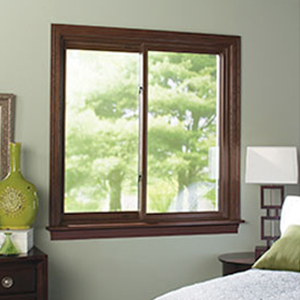Condensation is a sure sign that your home windows need to be replaced.
Windows are a crucial obstacle in between the rough, variable weather conditions outside as well as our tranquility, regular residence temperatures. Home replacement windows quite often have a fifteen to twenty-year lifespan, so fortunately we do not need to think of changing them frequently. However recognizing when it's time to replace them can be tricky. You could be tempted to try and hold out for another season if you notice the warning signs. However changing your windows now could help you extend the life of your entire house as well as maintain you and your family members cozy all wintertime long. Right here are a few indicators that your home windows are not prepared for the severe winter this year.
Drafty Residence
As windows age, they start diminishing, breaking, and not closing correctly, permitting air from inside your house to flow out. As a result of this, your HVAC system has a hard time to maintain your home at a consistent temperature as well as sends your power bills skyrocketing. If your house is visibly more breezy or your electrical costs seem to be increasing this succumb to no obvious factor, you could wish to have your home windows had a look at.
Hard to Lock
We enjoy having our windows open when the weather is nice, however they should not be open every one of the time. Throughout the winter when we're away, your home windows ought to be shut in place and locked. Windows with malfunctioning locks is a significant safety risk that ought to be corrected asap to keep your household safe. Often the lock can be repaired reasonably, however if the home window is having difficulty staying open or closed or is leaking air, it could be best to just install a new one.
Condensation Forming
The biggest indication that you need new windows is when condensation starts to form on the inside of your home window when it is closed as well as secured. This is indicative of a likely irreversible flaw as well as should be resolved immediately to stop the potential growth of mold in the framework, which could infect various other locations of your home and also trigger major damage when left without treatment.
Have you practically had it with your old, drafty windows?
Is this the year you've chosen to finally change your home windows? Changing your windows with new ones comes with lots of advantages, consisting of a power effectiveness boost, much better ventilation, and far better quality of light in your house. The National Fenestration Ranking Council licenses and also classifies home windows (in addition to doors and also skylights) on their performance as well as power effectiveness. When you're buying new home windows you'll see these ratings on the NFRC tag. In this week's blog, we'll discuss ways to read this tag making sure you're making a notified choice on your new windows.
Warm Gain and also Loss
The first three residential or commercial properties on the tag relate to exactly how the window carries out when it come to warmth gain and also loss. Windows gain and also lose heat in 3 methods:
Direct conduction with the glass.
Radiation of heat from the sun right into your house, and also out of the house from objects in your home.
Air leakage through and around the window.
U-factor
This is "The rate at which a window, door, or skylight conducts non-solar warm circulation." The takeaway below is "The reduced the U-factor, the extra energy-efficient the home window, door, or skylight."

Solar Warmth Gain Coefficient
The SHGC tells us just how much radiation is admitted with the window as well as launched as warm in the home. The lower the number, the much less warmth is transmitted. Nonetheless, this does not necessarily imply you want a reduced SHGC. For example, since a greater SGHC suggests the home window allows extra heat in, you can enable more solar heat inside in the wintertime, which can reduce your home heating demands. In this instance, the environment you stay in will certainly play a major factor in choosing an SHGC score.
Air Leakage
This quantifies how much air the home window allows about a certain pressure difference throughout it. The lower the ranking, the much less air leak.
Sunshine Transmittance
The following two rankings determine what does it cost? light a home window lets right into your house.
Visible Transmittance (VT).
This number in between 0 and also 1 actions what fraction of the spectrum of noticeable light the home window lets through. The Buresh Home Solutions greater the fraction, the extra light the window will certainly enable. If you want to use daylighting in your home, you'll desire a greater fraction. If you want to decrease indoor glow, you might desire a lower portion.
Light-to-Solar Gain.
This number is the proportion between the SHGC and also the VT. "The higher the number, the a lot more light sent without adding extreme amounts of warm.".